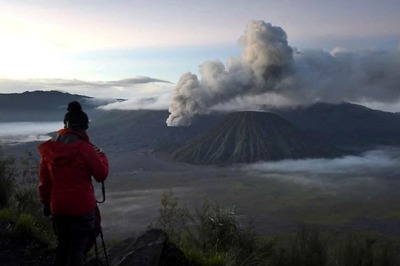
views
Oil prices settled higher on Wednesday after a fire on a pipeline from Iraq to Turkey briefly stopped flows, increasing concerns about an already tight short term supply outlook.
Flows have resumed through the Kirkuk-Ceyhan pipeline that carries crude from northern Iraq, the second-largest producer in the Organisation of the Petroleum Exporting Countries, to the Turkish port of Ceyhan for export.
The explosion that set off the fire on the pipeline in the southeastern Turkish province was caused by a falling power pylon, not an attack, a senior security source said.
Supply concerns mounted this week after Yemen’s Houthi group attacked the United Arab Emirates, OPEC’s third-largest producer, while Russia, the world’s second-largest oil producer, has built up a large troop presence near Ukraine’s border, stoking fears of invasion.
Brent crude futures settled up 93 cents, or 1.1%, to $88.44 a barrel. The global benchmark earlier touched $89.13, its highest since Oct. 13, 2014.
U.S. West Texas Intermediate (WTI) crude futures settled up $1.53 to $86.96 a barrel, its highest since Oct. 9, 2014.
“While $90 could have triggered some profit-taking and a minor cooling of prices, this suggests they’ll see no reprieve and we could realistically see $100 oil soon,” said Craig Erlam, senior market analyst at OANDA.
OPEC officials and analysts say that oil rally may continue in the next few months and prices could top $100 a barrel due to recovering demand despite the spread of the Omicron coronavirus variant.
“Any way that the numbers are crunched, it appears that
global inventory will continue to draw for a few more months with this implied tightening in the balances keeping this bull alive through the rest of this month and most of next,” said Jim Ritterbusch, president of Ritterbusch and Associates LLC in Galena, Illinois.
OPEC+, which groups the cartel with Russia and other producers, is struggling to hit their monthly output increase target of 400,000 barrels per day (bpd).
“Unplanned outages in Libya, Ecuador, and Kazakhstan, coupled with downgrades to U.S., Russia, and Brazil forecasts, together result in 1 million bpd lower supply this month than previously forecasted,” Rystad Energy’s senior oil markets analyst Louise Dickson said.
The International Energy Agency, however, said the oil market was due to flip into surplus in the first quarter as some producers are set to pump at or above all-time highs. [IEA/M]
An oil surplus should also lead to a build-up in inventories, as the IEA reported that commercial stocks in OECD countries were well below pre-pandemic levels at around seven-year lows.
(Additional reporting by Rowena Edwards, Noah Browning and Sonali PaulEditing by Marguerita Choy, Mark Potter and David Gregorio)
Disclaimer: This post has been auto-published from an agency feed without any modifications to the text and has not been reviewed by an editor
Read all the Latest News here



















Comments
0 comment